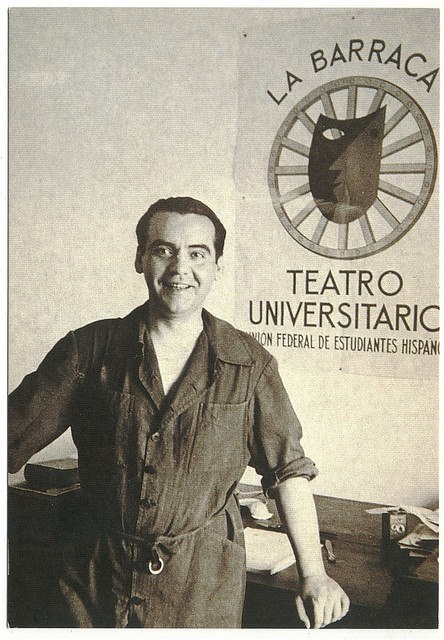In the new Spain of 1931, Lorca (aged 33) was appointed the director of a university travelling thea
In the new Spain of 1931, Lorca (aged 33) was appointed the director of a university travelling theatre that would perform classical works (Cervantes, Lope de Vega, Calderón de la Barca) in the villages and market squares of rural Spain. La Barraca (barn/shack) wore blue boilersuits as their ‘uniform’. Ian Gibson writes: “Since the purpose of the Barraca was to educate while entertaining… it was not suprising that Lorca’s instinct drew him first to Cervantes’s Entremeses, short plays or interludes. As for the poet’s decision to include in the repertoire Calderón de la Barca’s miracle play Life is a Dream, this gave rise to severe misgivings both from the Right and the Left - the former wondering how a 'Marxist’ group could dare to put on a 'sacred’ play, and the latter asking what a Republican company with a government subsidy was doing producing a 'Catholic’ work… Lorca [explained before performances] that as he saw it, Cervantes and Calderón represent the two sides to the Spanish temperament: the earthy, human side is the terrain of the author of Don Quixote, the spiritual that of Calderón. Between these two 'antagonistic poles’, Federico claimed, the Spanish theatre always oscillates, and Life is a Dream should not be seen simply as a dramatisation of Catholic dogma.” Ian Gibson, Federico García Lorca, Faber & Faber, 1989 -- source link
Tumblr Blog : eleternoaspirante.tumblr.com
#cervantes#la barraca
